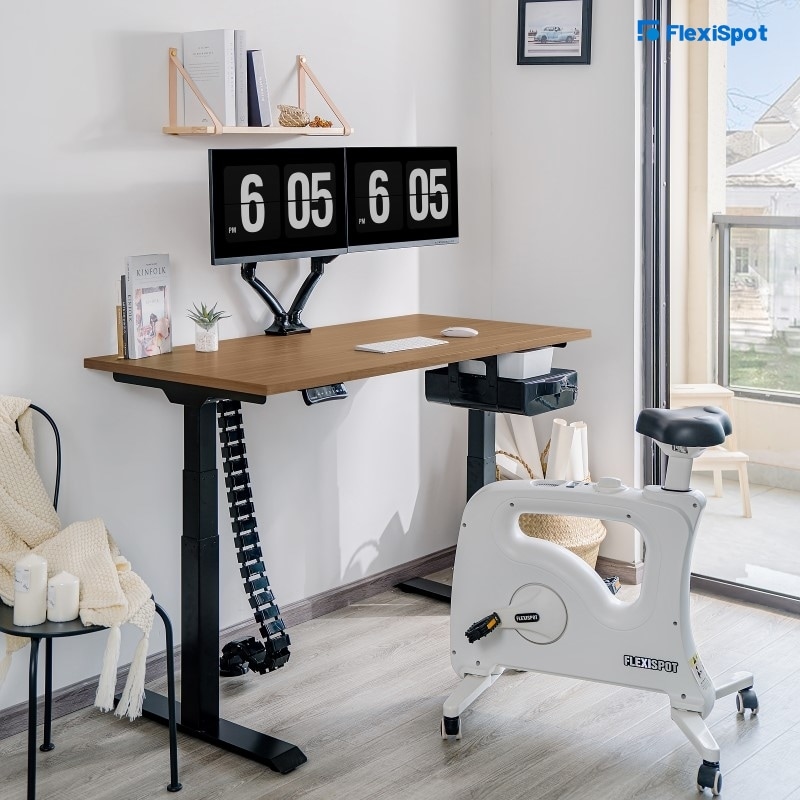Ever since the COVID-19 pandemic hit, nearly all employers have wrapped their minds around the idea of adapting the remote working model. Some employers provided the luxury of working from home occasionally to their employees, but after COVID-19, the only way to survive through the rough patch was to go fully remote. With the social distancing guidelines, it just wasn't possible for employers to operate on-premises at full capacity.
While switching to the remote model did enable employers to keep their businesses afloat, it came with an all-new set of challenges. The biggest challenge for all employers that still stands is to get the most out of their remote employees. The employees are working, but there's a massive difference in their efficiency and productivity levels. The work they could do in a few hours takes much longer to complete. It poses a serious threat to the business, which employers are trying to fix.
What Challenges are Employers Facing Today?
Before we can move on to the many ways employers can get the most out of their remote employees, let’s shed some light on the biggest challenges that employers are facing today with the remote working model.
Lack of Communication
Communication was never an issue pre-pandemic. Employees could talk face-to-face, clear any confusion they had over something, discuss official matters, brainstorm, and work together as a team to get things done. However, the remote working model has led to poor communication. Not everyone has their mobile phones with them all the time, and if there's something one employee wants help with, it has got to wait till the concerned person becomes available again. Lack of communication is causing unprecedented delays that affect the business as a whole.
Poor Time Management
Another major challenge that employers face with remote working is having the work completed within time. When all employees were working at the office, all they did was work. However, one can't work non-stop when at home. There are various distractions and obligations one can't run away from. As a result, employees are failing at managing time big time. Something they could do in a few hours at the office takes them an entire day at home (even more for some). When tasks aren’t completed on time, the employers have to bear the consequences.
Down Times
All workplaces are equipped with power and internet backup. In the case of power or internet downtime, the work isn't affected. However, that's not the case with remote working. Employees come to the employers with different excuses, and the employer has got no option but to trust their employee. After all, there's not much they can do about power outages or internet downtime in their employees' neighborhoods. The result is missed deadlines and poor productivity.
Data Security
Employees need access to the company’s data to be able to work. While the information is secure within the workplace, it’s highly likely to leak when employees are working from their homes. Employees are scattered all over the city and even across the country, and the employer has to provide data access on various computer systems, which makes it quite a tough challenge for the employer to keep their confidential data secure.
Increased Healthcare Claims
Unlike office premises, employees don’t have appropriate ergonomic equipment at home. Poor ergonomics result in health-related consequences, and as a result, employees claim healthcare more often than they did when they were working at the office.
How Can Employers Get the Most Out of Their Employees?
It has been as difficult for the employers as it has been for employees to adjust to the new normal. Where employees had to make it work with the limited resources at home, employers had to bear the weight of missed deadlines, poor efficiency, and data breaches. Since the coronavirus keeps on modifying and we keep getting hit wave after wave, we can say that the remote working model is here to stay. Even the companies that have opened up again aren’t fully operating on-premises. The hybrid model is a thing now!
If you’re an employer who wants to take steps to improve your remote employees’ efficiency and have them work to their maximum potential, we might be able to help you. We’ve listed down some ways in which employers can get the most out of their remote employees and make the remote model a success!
1. Invest in an Interactive Communication Platform
Employees can quickly walk over to a colleague's workstation and ask any questions they have. They can even knock on their manager's door anytime during the day and discuss any pressing matter that needs immediate attention. However, that's not possible when you're working remotely. There's a lack of communication, and that can slow down the progress. You can overcome this challenge by setting up an interactive communication platform that makes way for instant messaging, audio calls, and video conferencing. This platform should be accessible on both mobile phones and desktops so that everyone is available when they’re needed during office hours.
2. Do Weekly Catch-Ups
There’s no denying the fact that the work gets delayed and deadlines are missed when an employee is working from home, especially if they’ve got other obligatory roles to play at home, like that of a dad and husband. To overcome this problem, an employer should set weekly goals and objectives for all employees and have the managers have weekly catch-ups to discuss the progress. When employees know that they'll be held accountable for any missed deadlines, they'll work with more dedication and try their best to get things off their desks without errors and on time.
3. Provide Everything an Employee Needs
You, as an employer, have got to accept the fact that it's not easy to work from home without proper equipment. You should provide all your employees with basic equipment and tools, including a laptop, headphones, and mouse. Your employee shouldn't have to ask you for it. However, having these basics might not be enough in the long run. You've to make sure your employees are working in an ergonomic environment. You should offer to help your employees with anything they need, including an ergonomic work desk like the Willow Solid Wood Standing Desk, chair, or a backrest. You can either arrange it for your employees, have the amount your employees spend on office equipment reimbursed, or offer to cover half the expenses – anything that would encourage them to set up an ergonomic home office. Not only will that have a positive impact on your employees’ productivity and efficiency, but it’ll also benefit their health.
4. Establish a Reward System
You’ve got to offer your employees some motivation so that they work with their utmost dedication. Apart from the regular appraisals and bonuses, you should establish a reward system. Set a criterion on which you'll reward your employees. It could be a cash reward, or it could be any recreational reward that an employee would look forward to.
Also, don't set a limit to how many times an individual can become eligible for it. If you set a limit to once or twice, an employee may not give their best once they've reached the limit, and there's nothing to look forward to. Create an environment of healthy competition. And once an employee qualifies for the reward, don't wait for them to ask for it. Reward them without asking!
Is Micromanagement the Key?
Always remember – you can't get the most out of your remote employees through micromanagement. Nobody likes to be micromanaged, and that'll only build frustration among employees. Set clear goals for each employee with deadlines and follow up when the deadline is near. Inquiring about the status every day won’t get you anything. Instead, your employee may get so frustrated that they may just quit!
If you ask us what the key to a successful remote model is and what would help you get the most out of your employee, we would say understand. Understand that working from home is a new experience for them. Understand that they aren’t working in a formal office environment and that they’re surrounded by numerous distractions.
Understand that their work-life balance is as out-of-place as it’s for you. When an employee knows that their employer understands them, they’ll naturally feel inclined towards satisfying their employer and giving their best. In times when physical bonding isn’t possible, it’s best to connect with your employees on an emotional and psychological level.






